How to grow an eustoma flower from seeds: planting and care rules
Delicate flowers of various shades, reminiscent of a rose, will become a welcome guest in any garden. We are talking about eustoma - from Greek this name can be translated as "beautiful mouth". This is not the only name, others are Irish rose, Texas bell, tulip gentian and even prairie flower.
Description
Eustoma, or lisianthus, is a perennial herb, but in regions with low temperatures it is cultivated as an annual or biennial. For several seasons, eustoma grows beautifully in a pot on a windowsill as a home flower. The homeland of eustoma is Central America and the Caribbean. Hence the habit of constant heat and humidity.
Eustoma is grown mainly for cutting. These flowers live on the site for only one season, but they stand well in bouquets. Up to 20-30 buds bloom on one stem, and sometimes more. The petals are painted in colors from white to purple, there are varieties that combine several shades.
The peculiarity of the plant is its reproduction method. Cutting is not suitable for eustoma, as the cut branches do not root. Dividing the bush is also not permissible, since the root system of the Lisianthus is very fragile. The flower propagates only by seeds and seedlings.
Popular varieties
In horticulture, only one type of eustoma is used - large-flowered. It rises 0.6-1.2 m above the flower bed. The varieties that are most common in the areas:
- The large-flowered Russell eustoma resembles a poppy in shape, the petals have a wavy or simple edge. The shades are different: white, pink, etc.
- Echo is grown for bouquets. The petals of this variety are colored monotonously or with a gradient. There are 11 color options.
- Aurora stems grow up to 1.5 m. Another feature of this eustoma is double pink, purple or blue flowers.
- Flamenco is another ornamental Lisianthus variety. The color of the buds is white, passing to the edge in a pale lilac.
- Florida Pink has a delicate pink color.
- White large-flowered eustoma is grown for bridal bouquets, it has so pure shade and graceful flowers.
Eustoma varieties for indoor cultivation do not exceed 45 cm in height:
- The mermaid stretches to about 15 cm and produces adorable blue-purple flowers.
- A small bell dissolves large, in comparison with the plant itself, flowers of a pleasant lilac shade and graceful shape.
The choice of planting material
Lisianthus seeds are very small, up to 20 thousand pieces per 1 g. It is worth buying eustoma seeds only in specialized gardening departments. The packaging must have a processing mark. Untreated seeds will not sprout.
Most often, the seed is produced in the form of pills. Such processing not only increases germination, but also makes the sowing process convenient.
Advice
Gardeners often note the low germination of eustoma: only a third of the planted seeds germinate. However, with proper agricultural technology, germination can be increased up to 40%.
How, when and where to plant a flower
Eustoma is grown by seedling method. Sowing is done in February, at the latest in early March. Flowering in this case occurs in July-August.
Three types of nutrient medium are suitable for seedlings:
- a soil mixture prepared independently from peat and humus from tree bark in equal proportions. the second component is easily replaced with coconut flakes;
- shop seedling soil with a neutral or slightly acidic reaction;
- peat tablets, which are also purchased from a garden store.
For planting seeds, containers are soaked for a day, then several pelleted seeds are buried in them. transplanting into open ground is carried out directly in peat cups.
Landing rules:
- A drainage layer of fine expanded clay is poured onto the bottom of the pot.
- The soil is slightly moistened.
- Seeds are placed at intervals of 2-3 cm and slightly pressed to the ground.
- You cannot sprinkle it with earth, otherwise they will not germinate due to their small size.
- The boxes are covered with foil or a transparent lid, but always with holes for ventilation.
- Moisten the planting by spraying from a spray bottle, since a stream of water can deepen or wash away the seeds.
- On the 15th day, when the shoots break through, the shelter is removed.
Important
If you break the rules described above, the seeds will most likely not sprout.
Further care of the seedlings:
- It is best to avoid strong fluctuations in day and night temperatures. Optimal conditions for keeping - + 20-22 ° C, in any case, the thermometer should not fall below 14 degrees Celsius.
- To disinfect the seedlings, they are sprayed with a solution of Fitosporin.
- Eustoma needs a long daylight hours, at least 12-14 hours. To ensure this, a phytolamp is connected.
- Water the seedlings in moderation, even sparsely. In the evening, the condition of the seedlings is assessed: if the leaves are not dry, then you should not rush to watering. Excess moisture leads to dangerous fungal diseases, including black leg. Flowers struck by her are almost impossible to save.
- Strongly affects the condition of the sprouts and the way the soil is moistened. So, tap water needs to be defended during the day.
Picking
After 1.5-2 months, the grown seedlings are settled in separate containers. The height of the shoots at this point is usually 4-5 cm; the stems have several pairs of true leaves. The procedure is carried out very carefully, since the Lisianthus root system is not stable.
Operating procedure:
- The soil is taken the same as the one in which the seeds were germinated.
- The new pots are about 6 cm in diameter.
- The boxes are filled with soil, in the center they make a depression the size of the root system of the sprout.
- The seedlings are watered and a thin object is poured in, separating the sprouts from each other.
- The seedling is transferred into a new pot along with an earthen lump.
- Then they drop it in with soil so that the root collar remains at the same level as in the previous box.
- Immediately after picking, the seedlings are watered with a phytosporin solution. This preventive measure will protect delicate flowers from fungal and putrefactive diseases.
- After watering, the root collar can protrude above the soil level. In this case, it is sprinkled with earth.
- For the first time, the pots are again covered with polyethylene for faster adaptation.
- The picking procedure is repeated when the sprouts fill the entire space of the intermediate box.
Moving to open ground
Before planting in open ground, flowers must be prepared - hardened. Approximately 2 weeks before the intended transplant to the flowerbed, boxes with eustoma begin to be taken out into the street for a couple of hours. The stay in the fresh air is extended every day. Flowers adapt to weather conditions only on a warm day, but they should not be exposed to direct sunlight.
Transit times vary by region. The main condition for a good engraftment of eustoma in a flower bed is the minimum risk of frost. In Siberia, landing occurs at the end of spring; in the middle lane, planting is possible as early as early May.
The place for planting is chosen with a little shading - the direct rays of the sun will damage the delicate stems and buds. The soil on the site must be loose. The permeability of the soil is the key to good growth and lush eustoma flowering.
Transplant to open ground:
- The seedlings are watered a day before moving in order to remove the shoots from the boxes without injuring the roots.
- The soil on the site is dug up and cleaned of weeds.
- Then the soil is watered to a state of mud.
- When the moisture is absorbed, dig holes for the size of the root system.
- The distance between individual seedlings should be 15-20 cm.
- It will not hurt to apply mineral fertilizer to the planting pit.
- Seedlings are removed from the pots along with a clod of earth, transferred to wet planting pits and sprinkled with earth. At the same time, the root collar remains at ground level.
- There is no need to water the plants immediately after transplanting: there will be enough moisture in the soil for the first time.
- If the stems of the selected eustoma variety are thin and tall, then the support is immediately set up, otherwise the flowers will sag under their own weight.
- To help the sprouts take root, they are covered for a while with cut plastic bottles - something like a mini-greenhouse turns out.
Care rules
Eustoma care consists of a standard set of procedures: moistening, weeding, loosening, feeding.
In order for "beautiful lips" to bloom magnificently in a flower bed, you must follow the advice of experienced gardeners:
- The time in the light and in the shade should be approximately equal in duration. Direct sunlight is only useful for early germination of seeds.
- Each subsequent watering is carried out after the top layer of the soil has dried.
- After watering, the soil is mulched with a thin layer.
- They begin to feed the flowers after they are securely fixed on the site. A month later, a mineral complex for flowering plants is introduced. The source of nitrogen during the growth stage will be the drug Plantafol Growth. When buds begin to form, nitrogen-phosphorus fertilizer "Plantafol budding" is applied. To prolong flowering, eustoma is fertilized with "Kemira". Experienced flower growers note that all the recommended proportions of fertilizer on the package should be slightly reduced.
- Flowering begins in mid-summer. Lisianthus buds can last up to two months. If you cut a branch with flowers, a new one will grow in its place and will also delight the gardener with buds.
- All wilted buds must be cut off.
- Trick: to get as many buds as possible, you need to pinch the top of the flower when 6-8 true leaves appear on the stem.
Advice
Eustoma cannot be transplanted due to the fragility of the root system. It is necessary to decide in advance on the permanent place of the flower on the site.
The budding time depends not only on the timing of the transfer of seedlings to open ground, but also on weather conditions. If the summer is rainy, then you need to build a small shelter over the flower bed. If the flowers are exposed to a sharp change in temperature, they may not bloom and even die.
Eustoma on the windowsill
Perennial eustoma is successfully grown indoors. The room where the pot of lisianthus stands should have fresh air, but drafts should not be allowed. The optimum temperature for growth is 20-22 degrees Celsius. The boxes are placed on western or eastern windowsills in diffused light conditions.
Planting is carried out according to the same rules as with the seedling method, only after picking the flower remains in the pot. It is quite permissible to postpone the sowing of seeds to September - then flowering will come in winter.
Advice
In order for the eustoma to bloom on the windowsill longer, it is kept cool.
In winter, the potted eustoma has a dormant period. It is necessary to cut off the stems to 3-4 internodes and move the pots to a cold but heated room. Watering is practically stopped until spring, when the plant shows signs of growth.
Growing problems and their solution
Fusarium, gray rot and powdery mildew are found among fungal diseases on eustoma. At the first sign, the affected parts of the plant are removed, and what is left is treated with a fungicide.
Lisianthus pests: slugs, snails, whitefly, aphids and spider mites. Large insects are collected by hand.For treatment, insecticide preparations are used.
Although the eustoma is considered to be a rather capricious plant, it shouldn't be a big deal. You just need to monitor the level of soil moisture, since both drought and overflow have a detrimental effect on the flower. The main challenge is the seed germination stage, which requires a lot of sunlight. If the seeds have not sprouted, there is no need to despair: the eustoma does not have good germination. But if luck was on the gardener's side, with proper care, the lisianthus will delight you with a truly royal flowering and compete for a place in the bouquet, even with a rose.
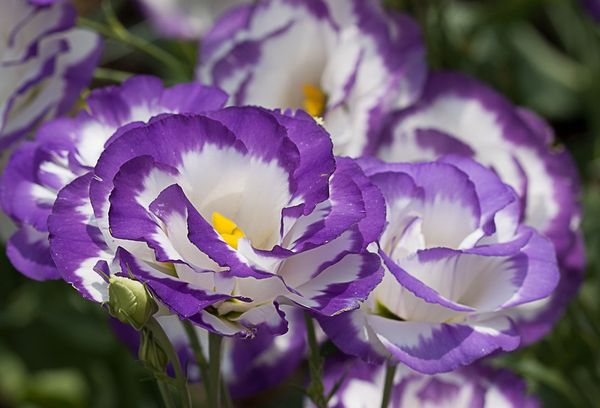
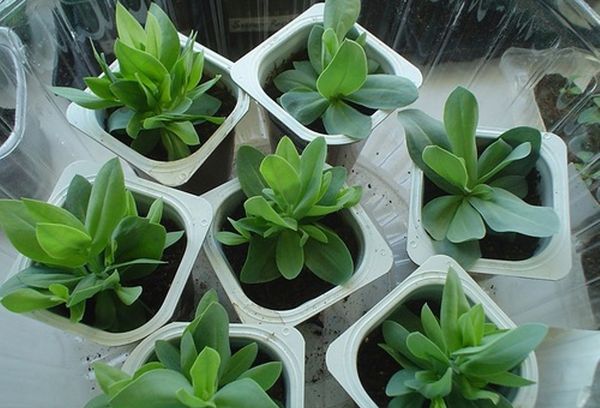
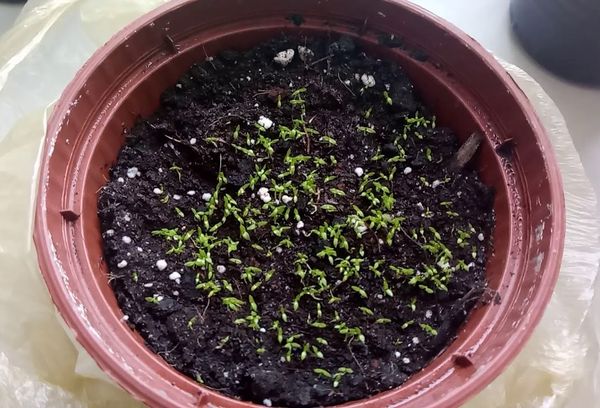
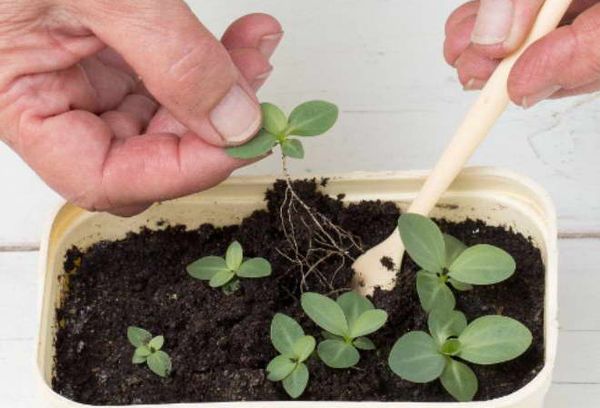
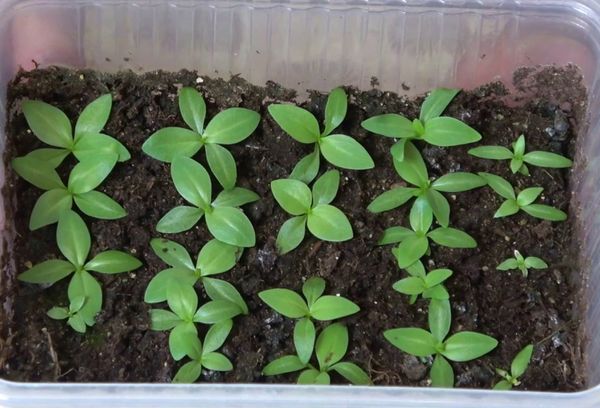

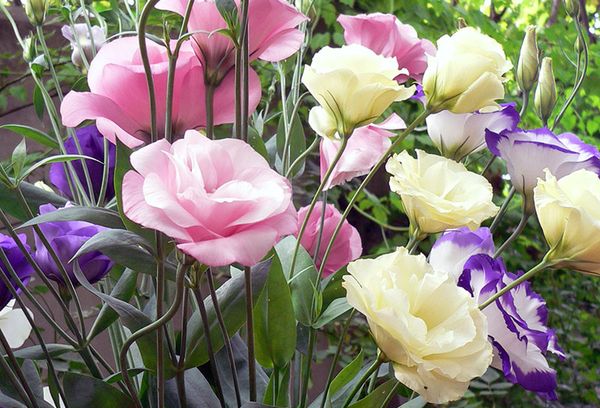
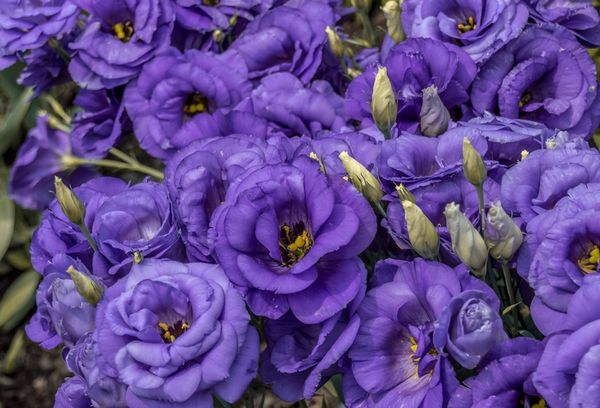

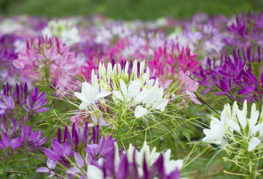


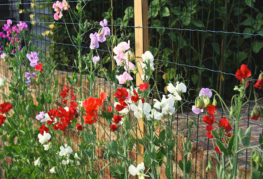
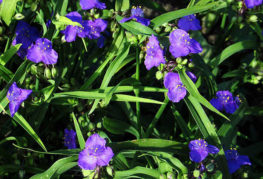
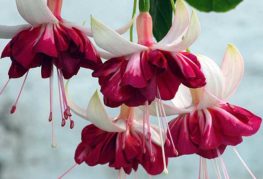
and will be published shortly.